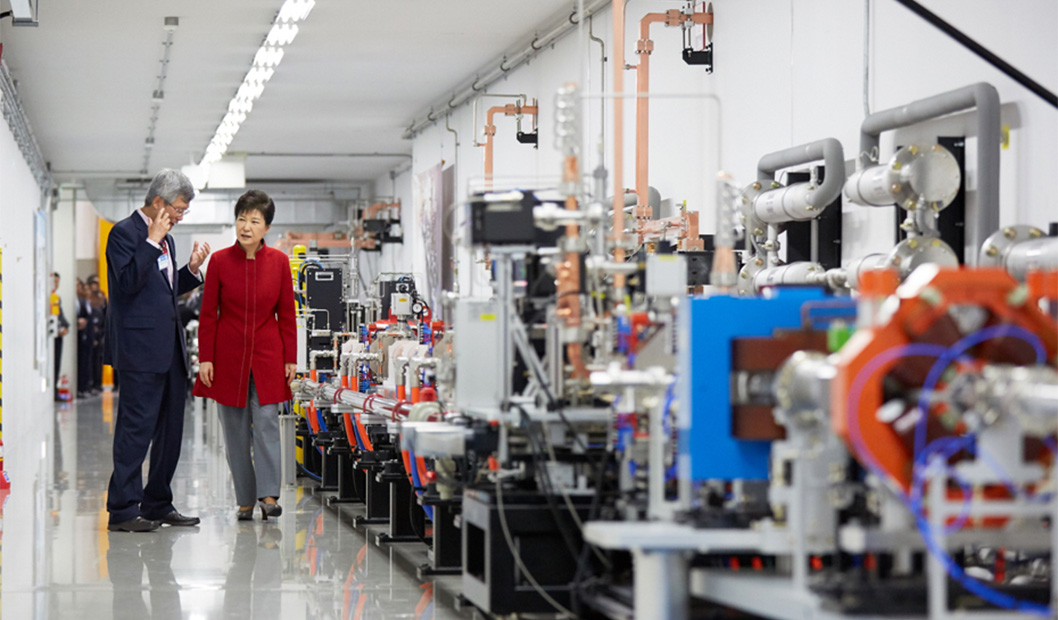
Fourth-generation synchrotron radiation facility can radiate 100 quadrillion times brighter than the sun, which allows us to analyze micro structures and phenomena that were unable to observe before in nanometer, femtosecond scale. Also, fourth-generation synchrotron radiation facility is expected to contribute in future industries, as it can be utilized in fields such as bioengineering, semiconductors, and clean energy.
PAL-XFEL is the third fourth-generation synchrotron radiation facility in the world following USA and Japan. A total of 429.8 billion KRW was invested to build the accelerator, and it took four years and nine months since Sep of 2011 to complete. The ministry held a test run in April and two months later it produced an X-ray free electron beam 100 million times brighter than the one made by the third-generation accelerator, which took shorter than each two years and four months of USA (LCLS) and Japan (SACLA).
POSTECH has developed and localized over 70% of core components of the facility through close corporation with small and medium business. As a result, POSTECH could reduce approximately 50 billion KRW, also laying the groundwork to enter world accelerator market. Especially, self-developed high accuracy electron beam position finder (Cavity BPM) was even exported to USA, a commanding country in this field.
President Park Geun-hye mentioned in the congratulatory message that university, institutes, and enterprises should cooperate to step ahead in fields such as bioengineering, medicine, material engineering, and nano science utilizing the new facility.
ى €ى‘권ىگ © يڈ¬ي•ê³µëŒ€ى‹ 문 무단ى „ى¬ ë°ڈ ى¬ë°°يڈ¬ 금ى§€


